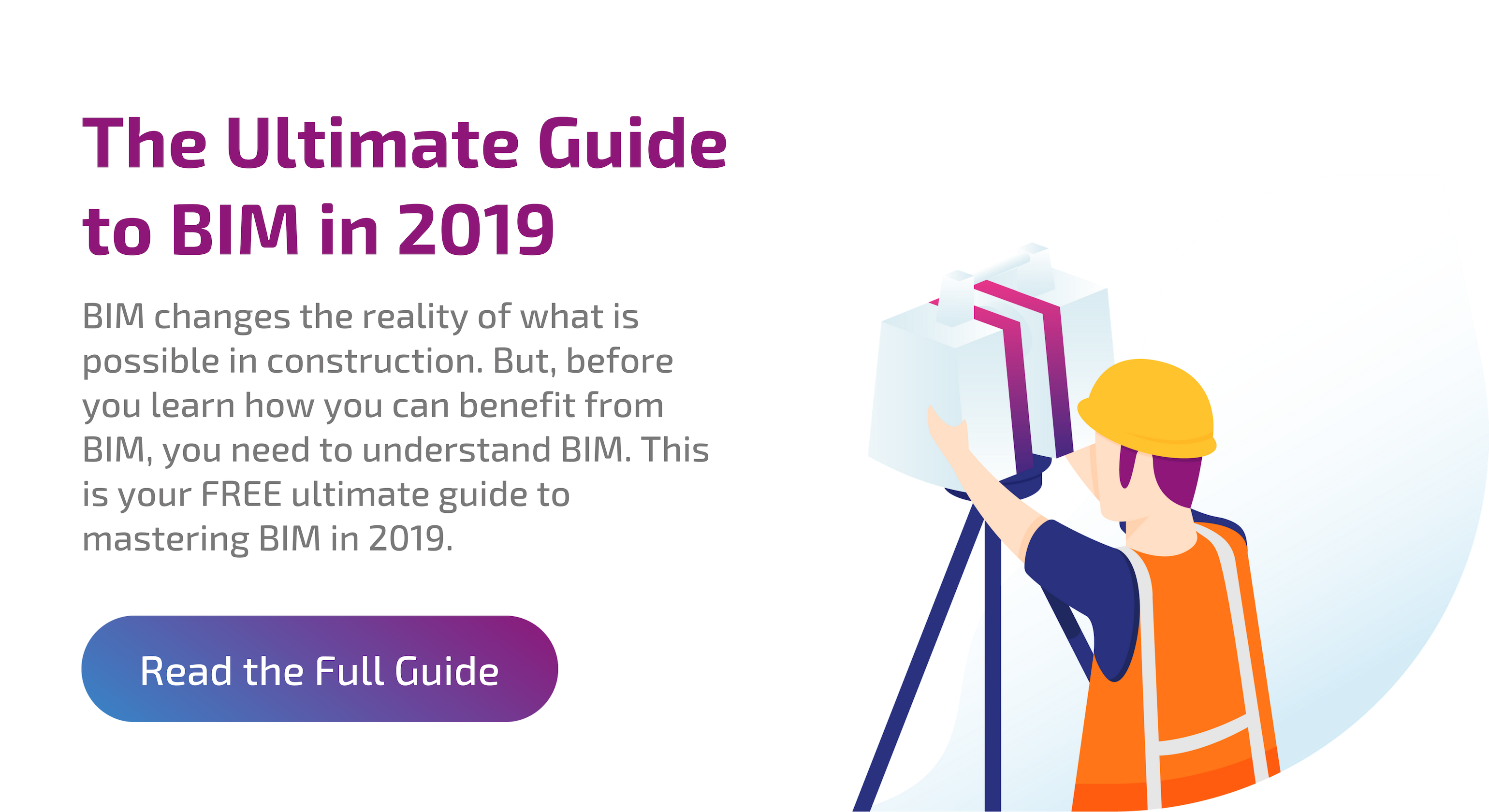What is BIM Level 2? What is the future of BIM?

BIM (Building Information Modelling) has introduced a lot of new terms, starting with BIM itself. Mastering this terminology is the first step to updating your processes and getting a grip on the future of BIM before it arrives.
Even if you are behind the curve on BIM, you can use this as an opportunity to not only catch up but get ahead of changes that are still down the road. Learning about BIM Level 2 is a great place to start. But, the future changes to BIM are where the real advantages and impacts reside.
BIM Level 2: Collaborative CAD
BIM is a term that is used to describe a variety of technologies. In the UK, this has been standardised in the BIM Level system to accompany the BIM Level 2 mandate for all publicly funded construction projects in the UK. This saw the creation of the terms BIM Levels 0-3, with BIM Level 3 still being broadly undefined, and BIM Levels 0-1 simply describing CADs and object-oriented CADs using the language of BIM.
BIM Level 2 does not stray far from standard CAD technology, but does introduce some new features that both deliver practical benefits and make it a category truly deserving a name of its own.
The regulation stipulates that to meet BIM Level 2 standards, all associated CAD software needs to be capable of exporting to common file formats and a special collaborative data environment (CDE) be created for the project. These file formats predominantly include IFC (Industry Foundation Class) and COBie (Construction Operations Building Information Exchange). A collaborative data environment, sometimes called a common data environment, is a data repository that is shared across the project, allowing for the collection, management and dissemination of documentation.
On a basic level, BIM Level 2 can be described as collaborative CAD. However, the files within a CDE remain separate. They are made easier to access, but any changes made within one file need to be updated across the rest of the file set manually. There is no ‘single-source-of-truth’ dataset. Files can still be shared and edited by all team members, promoting collaboration. But, there is still an administrative cost to undertaking such collaboration.
The decision to require BIM Level 2 for all publicly funded projects in the UK shows the importance of BIM in the industry. However, BIM Level 2 isn't the definitive definition of what BIM is, what BIM is intended to be, or where BIM is going.
Why BIM has always had more to offer and still does: BIM Level 3
If you want public funding for a UK construction project, you aren’t required to think past BIM Level 2. But, if your goal is to actually achieve the greatest benefits accessible using BIM technology and processes, you need to go further.
As stated, BIM Level 3 still remains undefined. But, it includes the technology and processes that have, for a long time, been considered core to the ‘true’ definition of BIM — single-source-of-truth, database-first design. In this instance, CAD tools start with information about a building and then present that information graphically, rather than the traditional method of storing all of the data as graphical representations.
What this does is allow multiple specialist CAD tools to access a single pool of data and present to the user just the graphical information that is relevant to them. This allows engineers to keep their bracing diagrams, builders to keep their isometric views and architects their plans, sections and elevations. But, rather than these all being distinct files, they are simply portions of one communal dataset. This means that any changes made in one file are automatically propagated across all others.
This helps to improve communication, allowing everyone to see the same data and ensures that any changes made are automatically shown to everyone. This improves quality control, efficiency, cost effectiveness and more.
Scan-to-BIM: the future of BIM that is on its way
Given that BIM Level 3 is still a pipedream for many construction and design teams, it might seem preemptive to talk about what comes next. But, it is never too early to get ahead of the curve and invest in future developments before they arrive. The reality is that as technology advances, it advances at an ever faster pace. It also becomes more accessible. The next changes are likely to happen faster than the last.
The next step for BIM is combining the modelling technology of BIM with 3D survey technology — point clouds, LiDAR and terrestrial laser scanners. This is a move that is being driven by the growing adoption of BIM in the first place. BIM provides the necessary platform for the deployment of this technology. Scan-to-BIM also allows those already at the edge of what BIM has to offer a means of further distinguishing themselves.
But, parallel advances in point cloud processing are also making what has come to be called ‘scan-to-BIM’ technology more accessible. The use of multi-stage, vector-based registration software has cut point cloud processing times by 40%-80% for survey teams accessing the latest technology. This makes it possible to deploy scan-to-BIM assets within a much wider range of circumstances while delivering even larger returns on investment.
Using these techniques, scans of a physical location can form the basis of a model. Construction phases and prefabricated components can be compared to models and plans for quality assurance, and BIM-like schematics can be built for already completed projects — improving the maintenance of older structures.
Greater quality assurances that come from scan-to-BIM add to the existing benefits of BIM. Scan-to-BIM data helps reduce mistakes and speeds up projects. The data and visualisation of that data through a model can easily be compared to construction phases and prefabricated components, which means that accuracy can be maintained even when using developmental manufacturing techniques such as 3D printing.
BIM has more to offer than BIM Level 2
While BIM Level 2 is a step in the right direction, there's still a lot more to come from BIM. BIM technology has been developing since the 1980s, and it will only continue to get more sophisticated, especially in combination with other technologies. Scan-to-BIM will play a significant role in the future of BIM, and must be taken into consideration by any team that wants to make the most of what BIM can do.
If what you want from BIM is to meet requirements for UK Government contracts, BIM Level 2 might be as far as you want to go. Fundamentally, the adoption of BIM Level 2 processes is not hard, you probably won't even need to change your existing CADs — that is part of the reason that it became mandatory.
However, if you want to develop a competitive advantage and create transformational outcomes, you need to go further. That means investing in software capable of single-source-of-truth storage. It also means remembering that BIM is, at its heart, a process. What delivers changes in outcome is not the software you use, but the way you use it. Simply adopting technology will do little if your processes do not update accordingly. This means that all members of a team need to be on board with BIM for it to be useful, and everyone needs to have access to the information they need.
Additionally, the right partners need to be sought outside of your core team. Scan-to-BIM is becoming more and more accessible thanks to advances in point cloud processing software, but it still requires the right partners to make it work. As with BIM, these advances in multi-stage, vector-based processing software are not universally adopted within the industry, and construction teams need to look for the right partners to access all of the benefits. BIM is the future of construction, invest now to stay ahead of the curve.
You have been reading about BIM Level 2 and the future of BIM. If you have more questions about BIM, how it is used and steps you can take to improve your processes and the adoption of BIM-enabled technology, we have written an Ultimate Guide to BIM just for you!
Tags: bim

